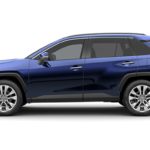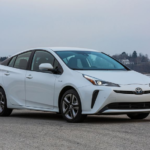Toyota Venza (incl. Hybrid) Oil Type
Select Your Model Year...
Choose the appropriate model year for the Toyota Venza (incl. Hybrid) you are trying to find the oil type & capacity for from the list below.
Toyota Venza (incl. Hybrid)

- Manufacturer: Toyota
- Data Source: Owner's Manual
You can find 24 different trims for the Toyota Venza (incl. Hybrid) and their corresponding recommended oil type.
The years available stretch from 2009 through to 2016 and to view the oil type and capacity you just click to expand.
The Toyota Venza is a mid-size crossover SUV that for some is easily confused in name with the Toyota Avanza minivan model developed in conjunction with Daihatsu. The Venza was created and manufactured chiefly for the North American market, with its first generation being launched in 2008 and running to 2017. After a pause, the Venza was brought back to the US market in 2020 for the 2021 model year.
While the first generation Venza was a standalone model, the second-generation models are in fact rebadged models of the Toyota Harrier SUV, which is sold in the Japanese market. The first models released in 2008 were code-named AV10, and were first unveiled at the 2008 North American International Auto Show in Detroit.
When it was first released, the Venza came with just one trim level, but it did include a number of impressive features, including 19-inch alloys, available 20-inch alloys, a 6-disc CD changer, dual-zone climate control, power-adjustable driver’s seat, wheel-mounted audio controls, hill-start assist, and more.
There were two main powertrains for the Venza at first, either a 2.7-liter inline-4, or a 3.5-liter V6 unit. The former outputted up to 182-hp while the V6 managed up to 286-hp. Both were paired with a 6-speed automatic transmission. For the second generation, Toyota has supplied either a 2.0L gasoline option, or a 2.5-liter gasoline hybrid option. The hybrid delivers up to 219-hp of combined power.
From 2009 to 20113, the Toyota Venza was selling quite well in both the US and Canada, but sales began to decline around 2015, leading to the model’s discontinuation. Toyota felt that the model had lost its competitiveness. That helps to explain that the main reason it came back was that it was essentially an all-new more contemporary design.
Sales in the 2021 model year exceeded 60,000 units in the US, greater than any previous year that the first-generation model was on sale.



